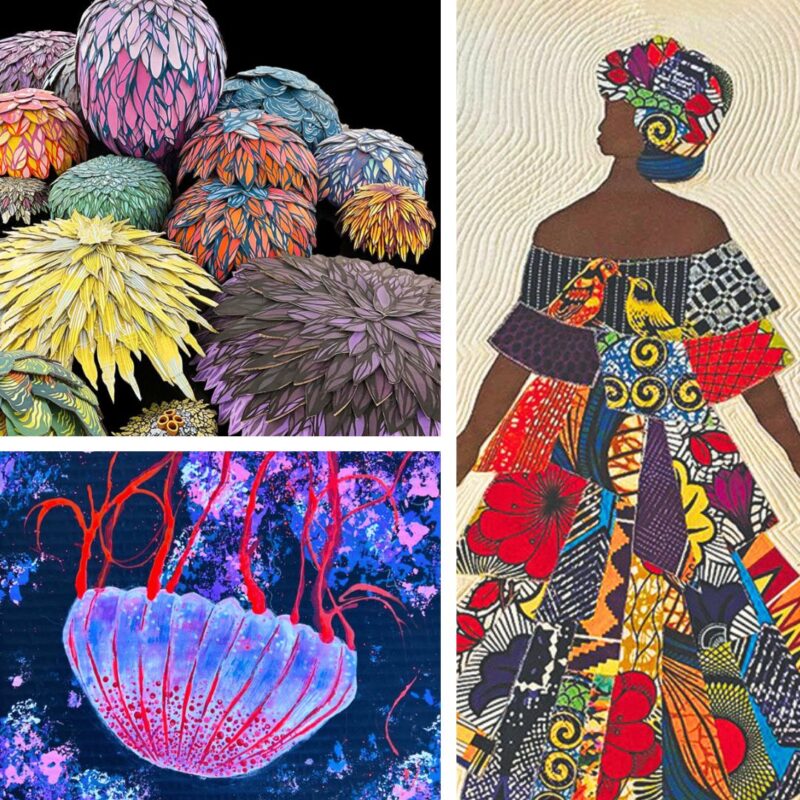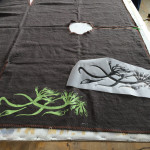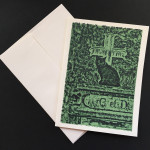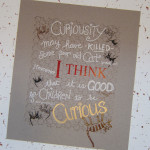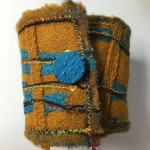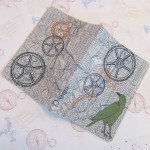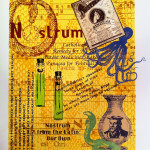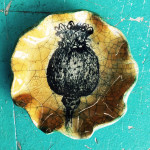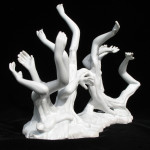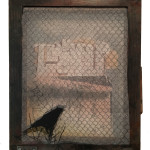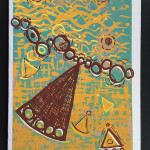About the interviews: The Richmond Art Center is fortunate and proud to work with a diverse and growing number of artists and teachers who work with our students at the Art Center as well as in our local communities. We want to share some of these wonderful people with you, to inspire your own artistic path, take a class, or learn more. See all of our interviews here.
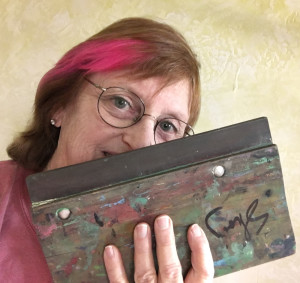 In this interview, meet Joyce Shon, a long-time Richmond Art Center instructor who’s teaching our upcoming Handprinted Textile Workshop and Material(s) World (which teaches basic screenprinting techniques). You can register for both of these classes now (see links above).
In this interview, meet Joyce Shon, a long-time Richmond Art Center instructor who’s teaching our upcoming Handprinted Textile Workshop and Material(s) World (which teaches basic screenprinting techniques). You can register for both of these classes now (see links above).
Joyce Shon is a Berkeley-born artist with a particular fondness for screen printing. She would probably rather sketch her bio than try to write it. She attended UC Berkeley and worked in construction for many years, supplementing her income and retaining her sanity with her artwork. Her unofficial job title for herself is Semi-professional Dilettante, constantly trying new techniques and attempting to integrate them into her artwork. Joyce loves not only creating art but also adding to her collection of the work of local artists.
Q. What do you find most inspiring about teaching art?
A. It might be easier to answer what is not inspiring about teaching art. In particular, I am always amazed at the way ideas multiply exponentially in a class. So much creative inspiration! Although most of my personal work is done in a solitary setting, the energy and inspiration I get from students and other teachers is simply phenomenal. And I love to solve problems, so when a student asks, for example, “Can I print with patinas? Can I print on glass? Can I print an image of the moon on green cheese?”… I’m instantly trying to figure out how to do it. Those sort of challenges really jazz me and expand my repertoire as both a teacher and an artist.
Q. How did you become involved with the Richmond Art Center?
In 1998, I was recovering from nearly two years of treatment for cancer. I spent a lot of that time in “solitary confinement,” and being able to draw and journal saved my sanity and possibly my life. I really wanted an arts community and found the Richmond Art Center through the recommendation of Patti Kjontaas, who was teaching there at the time. My goal was to learn enough basic ceramics skills to move on to meshing it with screen printing. Curtis Jones was teaching a screen printing class, and I took that because I love learning other artists’ tips and techniques and approaches. When he left to teach at the University of Oklahoma, he suggested that I take over his classes. I was hesitant (scared!) but agreed to teach one class. I loved it! But I still love being a student, too.
Q. What was your path to becoming an artist? Please share some of your favorite work (captions below).
A. Wow…my path is now 67 years long, and very meandering. My family was very hands-on. We did these very un-suburban things in suburban California. Making our own soap in a big kettle outdoors, pouring concrete for patios, building stairs and retaining walls, canning our own food, picking berries for jam, digging clams, sewing our clothes—we were always Doing Something. And I was one of those children who was constantly drawing on everything, always making something: Ballpoint pen tattoos on my friends, costumes for the family cats, papier-mâché dragons and castles for my little sister’s Barbie dolls, little mud figures that I would bury to be discovered in future eras as Items of great Archaeological Interest. I sketched while babysitting, which led to my first commission work: watercolors of toy soldiers for a little boy’s room.
Then my father gave me a screen printing kit for my 12th birthday. He had an ulterior motive—labels for his homemade beer. I really got into it, though: labels, posters, cards, yearbook covers. I attended the University of California in the ’60s (!) with a mind to transfer to CCAC but got waylaid by politics and ended up in Vancouver, Canada with a community of conscientious objectors.
Eventually I returned to the Bay Area and worked in construction, did custom sewing and screen printing and raised a daughter. Regardless of the direction I was headed at any point in my life, there was always an element of art. I remember washing new towels once and being intrigued by the lint in the dryer. It was so beautiful and soft, I decided to felt it into wall hangings. Meanwhile, at my day job, I was operating heavy equipment, turning the Berkeley Landfill into Cesar Chavez Park. Large scale sculpting! I could go on and on and on, but you’ve probably got the drift by now. No particular favorite work—after all, I am a semi-professional dilettante. But I am sorta more jazzed by fiber than paper. May my path continue to meander.
Q. Who are your inspirations?
A. That’s a tough question, because inspirations are everywhere. But what comes to mind first is all the hours I’ve spent in museums looking at marvelous magical works by unnamed artists from cultures all over the world. Masks from anywhere, cloth of bark or fibers, painted or printed, kachinas, carvings, ritual objects of known and unknown purpose. Our human history is full of everyday people recording their visions in marvelous ways.
Q. What do you like to do when you’re not at the Art Center?
A. Well, twenty years ago, I might have been racing camels or fueling up a backhoe. But these days you are more likely to find me working on a costume for an event past, present, future (or none of the above), baking cookies, reading anything in print, attacking weeds or packing my suitcase —the sketchbook and camera go in first.
Q. What’s on your bucket list?
A. I always thought it would be very cool to learn to fly a helicopter. And I am terrified of heights.
Q. If you could meet one artist, living or not, who would it be and why?
A. Unfair question! How ever to make a single choice? Any of the unnamed women who made those carvings, textiles, baskets, adornments that I have gazed at, enraptured, in countless museums. Maybe Susie Silook, a woman of Yupik, Inupiak and Irish descent. Her work, which combines traditional carving technique with a modern message, just takes my breath away and makes me feel my heart sending my blood to my brain. And she doesn’t live so very far away—can you get me an introduction?
Thank you, Joyce!
Be sure to check out Joyce’s class and workshop and register early before they fill up!
Images, from left to right:
1st row: screenprinted cats plates (set of 4), handmade bog coat, “Chat Noir” print, “Curios” print
2nd row: felt cuff, handmade journal,“Nostrum” print (from The Alphabet According to Kate series), screenprinted poppy pod plate
3rd row: ceramic sculpture—piece from “The Right to Bear Arms”,“Look Up Sam” mixed media piece—screen print on salvaged materials, “Tools” print, “Kilter” print

